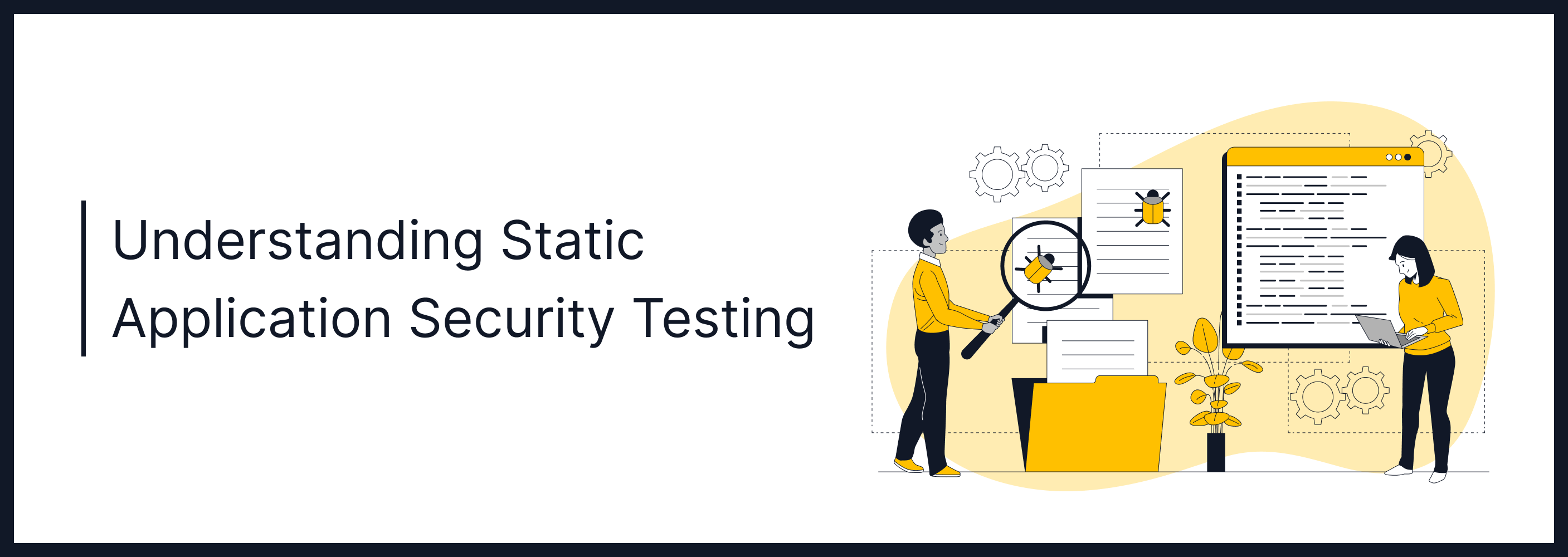
Oct 15, 2024 Information hub
Understanding Static Application Security Testing: Key Benefits and Trends
In today’s digital age, where software applications are the backbone of almost every business, ensuring the security of these applications is paramount. Cyberattacks are becoming more sophisticated, and vulnerabilities in software can lead to devastating consequences, including data breaches, financial losses, and reputational damage. This is where Static Application Security Testing (SAST) comes into play.
Static Application Security Testing is a method of identifying security vulnerabilities in the source code of an application before it is deployed. Unlike dynamic testing, which examines the application during runtime, SAST analyzes the code in a non-runtime environment, making it a proactive approach to security. This blog post will delve deep into the world of SAST, exploring its relevance, benefits, challenges, and future trends.
The Relevance of Static Application Security Testing Today
The Growing Threat Landscape
The modern threat landscape is evolving at an unprecedented pace. According to a report by Cybersecurity Ventures, cybercrime is expected to cost the world $10.5 trillion annually by 2025. With the increasing reliance on software applications, attackers are constantly looking for vulnerabilities to exploit. In fact, the Verizon Data Breach Investigations Report (DBIR) 2022 found that 43% of data breaches were linked to vulnerabilities in web applications.
Given this context, organizations can no longer afford to overlook the security of their applications. Static Application Security Testing offers a proactive solution by identifying vulnerabilities early in the development lifecycle, reducing the risk of exploitation.
Shift-Left Security
The concept of “shift-left” security has gained significant traction in recent years. This approach emphasizes integrating security measures early in the software development lifecycle (SDLC), rather than waiting until the application is fully developed or deployed. SAST is a key component of shift-left security, as it allows developers to detect and fix vulnerabilities during the coding phase, rather than after the application is live.
By shifting security left, organizations can:
- Reduce the cost of fixing vulnerabilities (it’s cheaper to fix issues during development than after deployment).
- Improve the overall security posture of their applications.
- Accelerate the development process by catching issues early.
How Static Application Security Testing Works
The Basics of SAST: Static Application Security Testing
Static Application Security Testing involves analyzing an application’s source code, bytecode, or binary code to identify potential security vulnerabilities. Unlike dynamic testing, which requires the application to be running, SAST tools can scan the code in a non-runtime environment. This makes it possible to detect vulnerabilities before the application is even compiled.
SAST tools work by:
- Parsing the code: The tool reads the source code and breaks it down into a format that can be analyzed.
- Pattern matching: The tool compares the code against a database of known vulnerabilities and coding best practices.
- Data flow analysis: The tool examines how data moves through the application to identify potential security risks, such as SQL injection or cross-site scripting (XSS).
- Reporting: The tool generates a report highlighting the vulnerabilities found, along with recommendations for remediation.
Common Vulnerabilities Detected by SAST: Static Application Security Testing
SAST tools are effective at identifying a wide range of security vulnerabilities, including:
- SQL Injection: A vulnerability that allows attackers to manipulate a database query by injecting malicious SQL code.
- Cross-Site Scripting (XSS): A vulnerability that allows attackers to inject malicious scripts into web pages viewed by other users.
- Buffer Overflows: A vulnerability that occurs when a program writes more data to a buffer than it can hold, potentially leading to arbitrary code execution.
- Insecure Deserialization: A vulnerability that occurs when untrusted data is used to instantiate objects, leading to remote code execution or other attacks.
- Hardcoded Credentials: Storing sensitive information, such as passwords or API keys, directly in the source code.
Practical Example: SAST in Action
Consider a scenario where a development team is building a web application that interacts with a database. During the development process, they run a SAST tool to scan the source code. The tool identifies a potential SQL injection vulnerability in one of the database queries. Specifically, the query is constructed using user input without proper sanitization.
By catching this vulnerability early, the development team can fix the issue before the application is deployed, preventing a potential data breach.
Benefits of Static Application Security Testing
Early Detection of Vulnerabilities
One of the primary benefits of SAST is its ability to detect vulnerabilities early in the development process. By identifying security issues during the coding phase, developers can address them before they become more difficult and costly to fix. According to a study by the Ponemon Institute, the cost of fixing a vulnerability after deployment is 30 times higher than fixing it during development.
Integration with DevSecOps
SAST tools can be seamlessly integrated into the DevSecOps pipeline, allowing for continuous security testing throughout the development lifecycle. This ensures that security is not an afterthought but an integral part of the development process. By automating security testing, organizations can reduce the time and effort required to identify and fix vulnerabilities.
Comprehensive Coverage
SAST tools provide comprehensive coverage of an application’s codebase, including third-party libraries and dependencies. This is particularly important given the widespread use of open-source components in modern applications. A report by Synopsys found that 84% of codebases contain at least one open-source vulnerability. SAST tools can help identify these vulnerabilities and ensure that third-party components are secure.
Compliance with Security Standards
Many industries are subject to strict regulatory requirements regarding application security. For example, the Payment Card Industry Data Security Standard (PCI DSS) requires organizations to implement secure coding practices and regularly test their applications for vulnerabilities. SAST tools can help organizations comply with these requirements by providing automated security testing and generating reports that demonstrate compliance.
Challenges of Static Application Security Testing
False Positives
One of the most common challenges associated with SAST is the issue of false positives. A false positive occurs when the tool flags a piece of code as vulnerable, even though it is not. This can lead to wasted time and effort as developers investigate and fix non-existent issues. While modern SAST tools have improved in terms of accuracy, false positives remain a challenge.
Limited Detection of Runtime Vulnerabilities
While SAST is effective at identifying vulnerabilities in the source code, it may not detect issues that only arise during runtime. For example, vulnerabilities related to the application’s configuration or environment may go undetected by SAST tools. To address this limitation, organizations often complement SAST with Dynamic Application Security Testing (DAST), which tests the application in a runtime environment.
Scalability
For large applications with millions of lines of code, running a SAST scan can be time-consuming and resource-intensive. This can slow down the development process, particularly in fast-paced environments where frequent code changes are made. To mitigate this challenge, organizations can implement incremental scanning, where only the code that has changed is scanned, rather than the entire codebase.
Current Trends in Static Application Security Testing
AI and Machine Learning
Artificial intelligence (AI) and machine learning (ML) are playing an increasingly important role in the evolution of SAST tools. By leveraging AI and ML, SAST tools can improve their accuracy and reduce the number of false positives. These technologies can also help SAST tools learn from past scans, making them more effective at identifying new and emerging threats.
Integration with CI/CD Pipelines
As organizations adopt continuous integration and continuous delivery (CI/CD) practices, there is a growing demand for SAST tools that can integrate seamlessly into these pipelines. Modern SAST tools are designed to be automated and run as part of the CI/CD process, ensuring that security testing is performed continuously throughout the development lifecycle.
Cloud-Native Security
With the rise of cloud-native applications, there is a growing need for SAST tools that can analyze code written for cloud environments. This includes code that interacts with cloud services, containers, and microservices. Cloud-native SAST tools are designed to address the unique security challenges associated with cloud-based applications.
Future Developments in Static Application Security Testing
Shift Towards Developer-Centric Tools
As security becomes more integrated into the development process, there is a growing demand for SAST tools that are designed with developers in mind. These tools are user-friendly, provide actionable insights, and integrate seamlessly into the developer’s workflow. In the future, we can expect to see more SAST tools that prioritize the developer experience, making it easier for developers to identify and fix vulnerabilities.
Enhanced Support for Modern Programming Languages
As new programming languages and frameworks emerge, SAST tools will need to evolve to support them. For example, languages like Rust and Go are gaining popularity due to their security features, and SAST tools will need to be able to analyze code written in these languages. Additionally, as more organizations adopt serverless architectures, SAST tools will need to adapt to the unique security challenges associated with serverless environments.
Conclusion
In an era where cyber threats are becoming more sophisticated and pervasive, Static Application Security Testing (SAST) is an essential tool for ensuring the security of software applications. By identifying vulnerabilities early in the development process, SAST helps organizations reduce the risk of exploitation, improve their security posture, and comply with regulatory requirements.
While SAST is not without its challenges, such as false positives and limited runtime detection, advancements in AI, machine learning, and cloud-native security are helping to address these issues. As the field of application security continues to evolve, SAST will remain a critical component of any organization’s security strategy.
Actionable Takeaways:
- Integrate SAST early: Incorporate SAST into your development process as early as possible to catch vulnerabilities before they become costly to fix.
- Complement with DAST: Use SAST in conjunction with DAST to ensure comprehensive security coverage.
- Automate security testing: Integrate SAST into your CI/CD pipeline to ensure continuous security testing.
- Stay updated: Keep an eye on emerging trends, such as AI-driven SAST tools and support for modern programming languages.
By adopting a proactive approach to application security with SAST, organizations can stay ahead of the ever-evolving threat landscape and build more secure applications.
